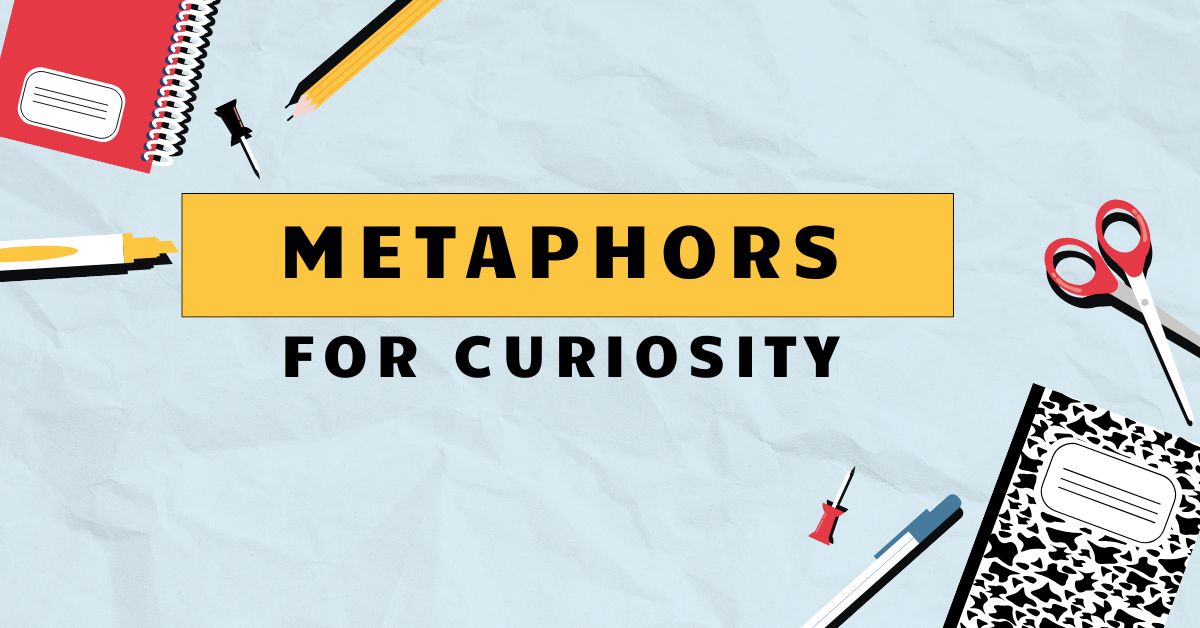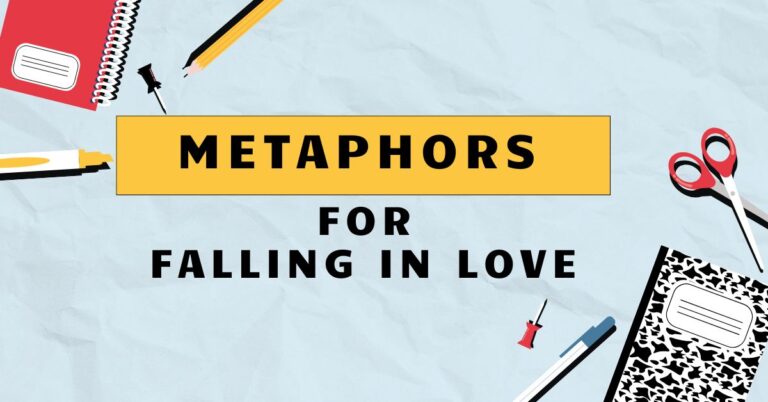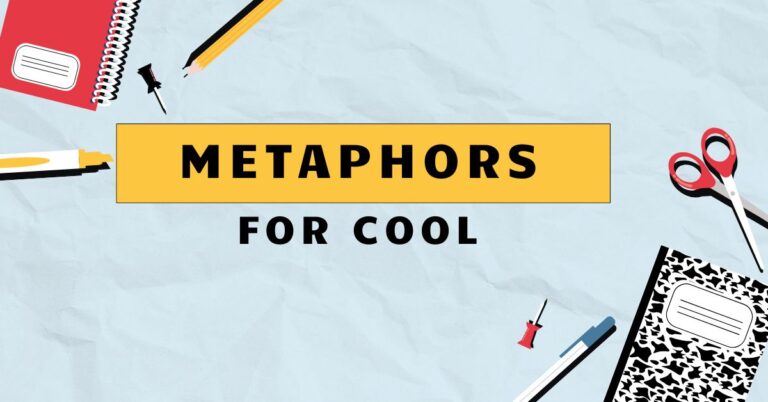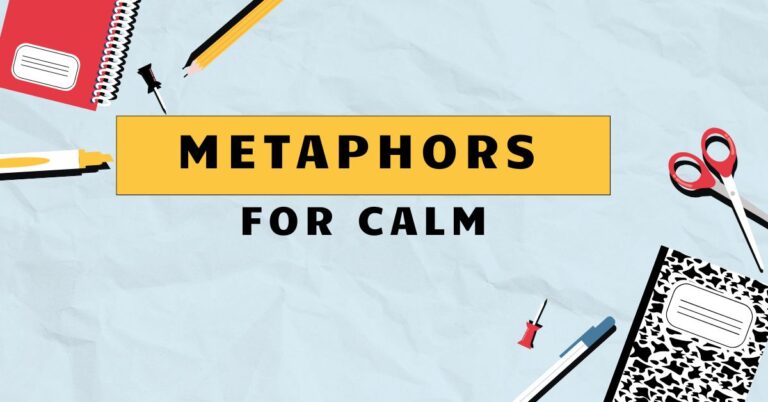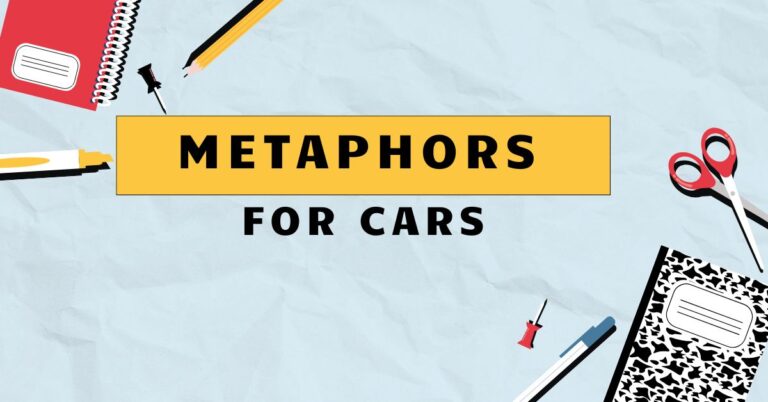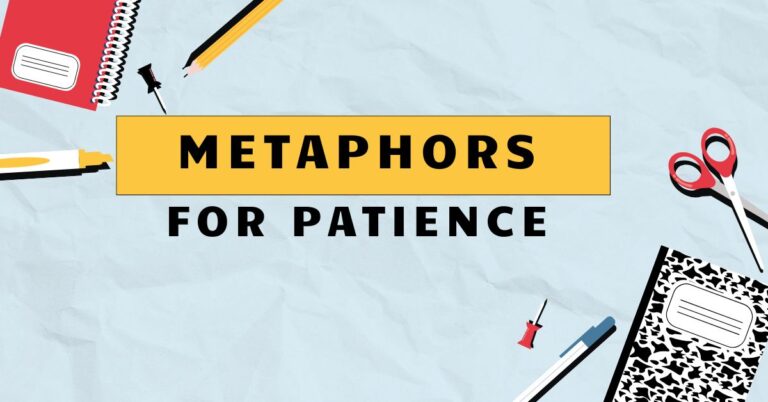34 Metaphors for Curiosity: Exploring Figurative Language
Understanding metaphors is crucial for mastering English, as they enrich language and provide deeper meaning. This article explores metaphors specifically related to “curiosity,” a concept often expressed through figurative language.
Examining these metaphors enhances comprehension, writing skills, and overall communication effectiveness. This guide is perfect for English language learners, writers, and anyone interested in exploring the nuances of metaphorical expression and enriching their vocabulary.
Table of Contents
- Introduction
- Definition of Metaphor and Curiosity
- Structural Breakdown of Curiosity Metaphors
- Types and Categories of Curiosity Metaphors
- Examples of Curiosity Metaphors
- Usage Rules for Curiosity Metaphors
- Common Mistakes with Curiosity Metaphors
- Practice Exercises
- Advanced Topics in Curiosity Metaphors
- Frequently Asked Questions (FAQ)
- Conclusion
Introduction
Metaphors are powerful tools in the English language, allowing us to understand abstract concepts by comparing them to more concrete ideas. Curiosity, an intrinsic human drive, is often expressed metaphorically, adding depth and color to our communication.
By exploring these metaphors, we gain a richer understanding of both language and the human experience. This article will delve into the various metaphors used to describe curiosity, their structures, and how to use them effectively.
This comprehensive guide is designed to help learners of all levels, from beginners seeking to expand their vocabulary to advanced speakers looking to refine their understanding of figurative language. Through detailed explanations, numerous examples, and practical exercises, you will learn to recognize, interpret, and use curiosity metaphors with confidence.
Understanding these nuances will improve your reading comprehension, writing skills, and overall fluency in English.
Definition of Metaphor and Curiosity
What is a Metaphor?
Ametaphoris a figure of speech that directly compares two unrelated things without using “like” or “as.” It asserts that one thingisanother, creating a vivid image or deeper understanding. Metaphors are essential for adding creativity and nuance to language.
They transform abstract ideas into more tangible concepts, making communication more engaging and memorable. For example, saying “He is a lion in battle” doesn’t mean he is literally a lion, but that he possesses lion-like qualities such as bravery and strength.
Defining Curiosity
Curiosityis a strong desire to know or learn something. It’s a driving force behind exploration, discovery, and learning.
Curiosity can manifest as a feeling of intrigue, a sense of wonder, or a need to understand the unknown. In a psychological context, it’s often seen as a motivational factor that drives individuals to seek out new experiences and knowledge.
Metaphors for curiosity often highlight its intense, probing, or illuminating nature.
The Function of Metaphors for Curiosity
Metaphors for curiosity function to illustrate the abstract nature of this emotion in a relatable way. They allow us to understand the intensity, scope, and impact of curiosity by comparing it to tangible objects, actions, or experiences.
This figurative language helps to convey the feeling of curiosity more vividly than literal descriptions might. For instance, describing curiosity as a “seed” suggests its potential for growth and development, while comparing it to a “fire” emphasizes its consuming nature.
Structural Breakdown of Curiosity Metaphors
Understanding the structure of curiosity metaphors helps in both interpreting and creating them. These metaphors typically involve two key elements: thetenor(the subject being described, in this case, curiosity) and thevehicle(the object or concept to which curiosity is being compared).
The connection between the tenor and vehicle is theground, which represents the shared characteristics or qualities that make the comparison meaningful.
For example, in the metaphor “Curiosity is a key,” the tenor is curiosity, the vehicle is a key, and the ground is the ability to unlock or reveal something. The metaphor suggests that curiosity, like a key, can unlock knowledge or understanding.
Analyzing these elements allows us to appreciate the depth and complexity of metaphorical language.
The effectiveness of a curiosity metaphor often depends on the strength and relevance of the ground. A well-chosen vehicle will have clear and compelling similarities to curiosity, making the comparison resonate with the audience.
The context in which the metaphor is used also plays a significant role in its interpretation and impact.
Types and Categories of Curiosity Metaphors
Curiosity as a Force
Many metaphors portray curiosity as a powerful force, like a current, a fire, or a magnetic pull. These metaphors emphasize the compelling and irresistible nature of curiosity.
They suggest that curiosity can drive individuals to overcome obstacles and pursue knowledge relentlessly. For example, “Curiosity pulled him forward” illustrates how curiosity can motivate action.
Curiosity as Illumination
Another common category involves metaphors that describe curiosity as a source of light or illumination. These metaphors highlight the way curiosity can reveal hidden truths and shed light on the unknown.
Examples include “Curiosity illuminated the path” and “His curiosity was a beacon.” These metaphors emphasize the enlightening aspect of seeking knowledge.
Curiosity as a Living Thing
Some metaphors personify curiosity, treating it as a living thing with its own needs and desires. These metaphors often describe curiosity as a seed that needs to be nurtured, or a fire that needs to be fed.
Examples include “Her curiosity sprouted” and “His curiosity was insatiable.” These metaphors emphasize the dynamic and growing nature of curiosity.
Curiosity as a Tool
Metaphors can also depict curiosity as a tool used to uncover information or solve problems. In this category, curiosity might be compared to a key, a map, or a magnifying glass.
These metaphors highlight the practical and instrumental value of curiosity in the pursuit of knowledge. For instance, “Curiosity is the key to discovery” suggests that curiosity is essential for unlocking new insights.
Examples of Curiosity Metaphors
The following tables provide extensive examples of curiosity metaphors, categorized by the types discussed above. Each example is designed to illustrate the different ways in which curiosity can be expressed through figurative language.
These examples will help you to identify and understand the nuances of curiosity metaphors in various contexts.
Table 1: Curiosity as a Force
This table includes metaphors that describe curiosity as a driving or compelling force, often suggesting an irresistible pull or energy.
| Metaphor | Explanation |
|---|---|
| Curiosity is a magnetic pull. | Suggests that curiosity irresistibly draws one towards something. |
| Curiosity is a raging fire. | Emphasizes the intensity and consuming nature of curiosity. |
| Curiosity is a powerful current. | Indicates that curiosity sweeps one along, driving them forward. |
| Curiosity is a relentless tide. | Highlights the persistent and unwavering nature of curiosity. |
| Curiosity is a driving wind. | Suggests that curiosity propels one forward with force. |
| Her curiosity pushed her forward. | Implies that curiosity acted as a motivator, driving her actions. |
| His curiosity pulled him into the unknown. | Suggests an irresistible attraction to the unexplored. |
| Curiosity surged through her veins. | Emphasizes the intense and visceral feeling of curiosity. |
| Curiosity is an engine. | Suggests that curiosity is a source of energy and motivation. |
| Curiosity is a catalyst. | Implies that curiosity initiates change and discovery. |
| Curiosity is a gravitational force. | Suggests a strong and unavoidable attraction. |
| Curiosity is a tidal wave. | Emphasizes the overwhelming and powerful nature of curiosity. |
| Curiosity is a tornado. | Suggests that curiosity can be destructive in its intensity. |
| Curiosity is a volcano. | Implies that curiosity can erupt with explosive force. |
| Curiosity is a geyser. | Suggests a sudden and powerful burst of interest. |
| Curiosity is a locomotive. | Indicates a powerful and unstoppable drive. |
| Curiosity is a rocket. | Suggests rapid and intense advancement towards knowledge. |
| Curiosity is a spring. | Implies a source of continuous energy and interest. |
| Curiosity is an avalanche. | Emphasizes the overwhelming and unstoppable nature of curiosity. |
| Curiosity is a flood. | Suggests an inundation of interest and desire to know. |
| Curiosity is a whirlwind. | Implies a chaotic and intense exploration. |
| Curiosity is a thunderstorm. | Suggests a powerful and disruptive force of inquiry. |
| Curiosity is a solar flare. | Emphasizes a sudden and intense burst of interest. |
| Curiosity is a dam break. | Implies an overwhelming release of pent-up interest. |
Table 2: Curiosity as Illumination
This table showcases metaphors that compare curiosity to light, emphasizing its ability to reveal hidden truths and provide clarity.
| Metaphor | Explanation |
|---|---|
| Curiosity is a beacon. | Suggests that curiosity guides one towards understanding. |
| Curiosity illuminated the path. | Implies that curiosity clarifies the way forward. |
| Curiosity is a spotlight. | Emphasizes the focus and clarity that curiosity provides. |
| Curiosity is a lantern. | Indicates that curiosity helps one navigate through darkness. |
| Curiosity is a guiding star. | Suggests that curiosity leads one towards a destination. |
| Her curiosity shed light on the mystery. | Implies that her curiosity revealed hidden aspects of the mystery. |
| His curiosity was a flame in the darkness. | Suggests that his curiosity brought clarity to a confusing situation. |
| Curiosity is a sunbeam. | Emphasizes the warmth and clarity that curiosity provides. |
| Curiosity is a lighthouse. | Suggests that curiosity provides guidance and direction. |
| Curiosity is a searchlight. | Implies that curiosity actively seeks out hidden information. |
| Curiosity is a flashlight. | Suggests that curiosity helps one explore the unknown. |
| Curiosity is a candle. | Indicates that curiosity provides a gentle and persistent light. |
| Curiosity is a torch. | Emphasizes the power and intensity of curiosity. |
| Curiosity is a spark. | Suggests that curiosity can ignite a passion for learning. |
| Curiosity is a ray of hope. | Implies that curiosity can lead to positive outcomes. |
| Curiosity is a star. | Suggests that curiosity is a guiding and inspiring force. |
| Curiosity is a laser beam. | Emphasizes the precision and focus of curiosity. |
| Curiosity is a magnifying glass. | Indicates that curiosity allows one to see things more clearly. |
| Curiosity is a lens. | Suggests that curiosity changes one’s perspective. |
| Curiosity is a mirror. | Implies that curiosity reflects one’s inner desires and interests. |
| Curiosity is a sunrise. | Suggests a new beginning and a fresh perspective. |
| Curiosity is a dawn. | Indicates the start of a new understanding or discovery. |
| Curiosity is a spotlight. | Emphasizes the focus and attention that curiosity brings. |
| Curiosity is a neon sign. | Suggests that curiosity is highly visible and attention-grabbing. |
Table 3: Curiosity as a Living Thing
This table presents metaphors that personify curiosity, portraying it as a living entity that grows, needs nourishment, and has its own desires.
| Metaphor | Explanation |
|---|---|
| Her curiosity sprouted. | Suggests that her curiosity began to grow and develop. |
| His curiosity was insatiable. | Implies that his curiosity could never be fully satisfied. |
| Curiosity needs to be fed. | Emphasizes the need to nurture and satisfy one’s curiosity. |
| Curiosity is a seed. | Indicates that curiosity has the potential to grow into something significant. |
| Curiosity is a growing flame. | Suggests that curiosity intensifies over time. |
| Curiosity is a hungry beast. | Implies that curiosity is a powerful and demanding force. |
| Curiosity is a restless spirit. | Suggests that curiosity is always seeking new experiences and knowledge. |
| Curiosity is a newborn. | Indicates that curiosity is fresh, new, and full of potential. |
| Curiosity is a vine. | Suggests that curiosity can grow and spread in unexpected directions. |
| Curiosity is a root. | Implies that curiosity can lead to deeper understanding and knowledge. |
| Curiosity is a parasite. | Suggests that curiosity can consume one’s thoughts and energy. |
| Curiosity is a butterfly. | Indicates that curiosity is beautiful, delicate, and fleeting. |
| Curiosity is a flower. | Suggests that curiosity can blossom and bring joy. |
| Curiosity is a plant. | Implies that curiosity needs nurturing to thrive. |
| Curiosity is a bird. | Suggests that curiosity can take one to new heights. |
| Curiosity is a river. | Indicates that curiosity flows and evolves over time. |
| Curiosity is a forest. | Suggests that curiosity can lead to a complex and interconnected web of knowledge. |
| Curiosity is a garden. | Implies that curiosity can be cultivated and enjoyed. |
| Curiosity is a tree. | Suggests that curiosity can grow tall and strong over time. |
| Curiosity is a puppy. | Indicates that curiosity is playful and eager to explore. |
| Curiosity is a kitten. | Suggests that curiosity is gentle and inquisitive. |
| Curiosity is a spider. | Implies that curiosity can weave intricate webs of understanding. |
| Curiosity is a bee. | Suggests that curiosity can gather valuable information from various sources. |
| Curiosity is a worm. | Indicates that curiosity can dig deep and uncover hidden truths. |
Table 4: Curiosity as a Tool
This table includes metaphors that depict curiosity as a tool, emphasizing its usefulness in uncovering information, solving problems, and gaining new perspectives.
| Metaphor | Explanation |
|---|---|
| Curiosity is the key to discovery. | Suggests that curiosity unlocks new knowledge and insights. |
| Curiosity is a map to the unknown. | Implies that curiosity guides one through unfamiliar territory. |
| Curiosity is a magnifying glass. | Emphasizes that curiosity allows one to see things more clearly. |
| Curiosity is a compass. | Indicates that curiosity provides direction and guidance. |
| Curiosity is a telescope. | Suggests that curiosity allows one to see beyond the immediate. |
| Curiosity is a shovel. | Implies that curiosity helps one dig deeper to uncover hidden information. |
| Curiosity is a microscope. | Emphasizes that curiosity allows one to examine things in great detail. |
| Curiosity is a filter. | Suggests that curiosity helps one separate valuable information from irrelevant data. |
| Curiosity is a lever. | Implies that curiosity can move and change things. |
| Curiosity is a hammer. | Suggests that curiosity can break down barriers to understanding. |
| Curiosity is a saw. | Indicates that curiosity can cut through complexity and confusion. |
| Curiosity is a drill. | Emphasizes that curiosity can penetrate deeply into a subject. |
| Curiosity is a knife. | Suggests that curiosity can dissect and analyze information. |
| Curiosity is a wrench. | Implies that curiosity can fix problems and resolve issues. |
| Curiosity is a magnet. | Suggests that curiosity attracts information and knowledge. |
| Curiosity is a net. | Indicates that curiosity can capture and collect information. |
| Curiosity is a ladder. | Suggests that curiosity can help one climb to new heights of understanding. |
| Curiosity is a bridge. | Implies that curiosity can connect different ideas and concepts. |
| Curiosity is a puzzle piece. | Suggests that curiosity can help complete a larger picture. |
| Curiosity is a measuring tape. | Indicates that curiosity helps one assess and evaluate information. |
| Curiosity is a sieve. | Suggests that curiosity can separate valuable insights from trivial details. |
| Curiosity is a detector. | Implies that curiosity can identify and uncover hidden elements. |
| Curiosity is an antenna. | Suggests that curiosity can pick up signals and information. |
| Curiosity is a periscope. | Indicates that curiosity can provide a wider perspective. |
Usage Rules for Curiosity Metaphors
When using metaphors for curiosity, it’s important to ensure that the comparison is clear, relevant, and effective. The vehicle should have strong similarities to curiosity, and the metaphor should enhance the meaning rather than obscure it.
Avoid using clichés or overused metaphors, as they can diminish the impact of your writing.
Consider the context in which you are using the metaphor. The appropriateness of a metaphor can depend on the audience, the tone, and the overall purpose of your communication.
A metaphor that works well in a literary context might be less effective in a technical report.
Be mindful of the connotations of the vehicle. The associations and emotions evoked by the vehicle can influence the way the metaphor is interpreted.
For example, comparing curiosity to a “fire” might suggest both its intensity and its potential for destruction, while comparing it to a “seed” might emphasize its potential for growth and development.
Common Mistakes with Curiosity Metaphors
One common mistake is using mixed metaphors, where the vehicle and tenor create an illogical or confusing image. For example, saying “Curiosity is a key that waters the garden” combines two unrelated metaphors (key and garden) in a way that doesn’t make sense.
Another mistake is using metaphors that are too abstract or obscure. If the audience cannot easily understand the connection between the tenor and vehicle, the metaphor will fail to communicate effectively.
It’s important to choose vehicles that are familiar and relatable.
Overusing metaphors can also diminish their impact. While metaphors can add color and depth to your writing, too many metaphors can make your language feel cluttered and confusing.
Use metaphors sparingly and strategically to maximize their effectiveness.
Here are some examples of common mistakes and their corrections:
| Incorrect | Correct | Explanation |
|---|---|---|
| Curiosity is a key that waters the garden. | Curiosity is a key that unlocks knowledge. | Avoid mixed metaphors. Choose vehicles that relate to the tenor. |
| His curiosity was a quantum entanglement. | His curiosity was a driving force. | Use familiar vehicles. Avoid overly technical or abstract comparisons. |
| Curiosity is like an ocean, a fire, a seed, and a star. | Curiosity is a guiding star. | Avoid overusing metaphors. Choose one strong metaphor instead of many weak ones. |
Practice Exercises
Test your understanding of curiosity metaphors with the following exercises. Identify the type of metaphor used in each sentence and explain its meaning.
Then, try creating your own metaphors for curiosity.
Exercise 1: Identifying Metaphor Types
For each sentence below, identify the type of curiosity metaphor used (Force, Illumination, Living Thing, or Tool).
| Question | Answer |
|---|---|
| 1. Her curiosity sprouted like a seed. | Living Thing |
| 2. Curiosity illuminated the dark corners of the mystery. | Illumination |
| 3. Curiosity pulled him forward into the unknown. | Force |
| 4. Curiosity is a key that unlocks new worlds. | Tool |
| 5. His curiosity was an insatiable beast. | Living Thing |
| 6. Curiosity is a beacon guiding us to the truth. | Illumination |
| 7. Curiosity is a tidal wave of questions. | Force |
| 8. Curiosity is a microscope for the mind. | Tool |
| 9. The flame of curiosity burned brightly within her. | Living Thing |
| 10. Curiosity is the compass that guides us through life. | Tool |
Exercise 2: Creating Your Own Metaphors
Complete the following sentences by creating your own metaphors for curiosity.
| Question | Possible Answer |
|---|---|
| 1. Curiosity is like a ______. | Curiosity is like a detective, always searching for clues. |
| 2. His curiosity was as strong as a ______. | His curiosity was as strong as a magnet, drawing him to the truth. |
| 3. Her curiosity bloomed like a ______. | Her curiosity bloomed like a flower, revealing its beauty. |
| 4. Curiosity is the ______ to understanding. | Curiosity is the bridge to understanding. |
| 5. Curiosity is a ______ in the darkness. | Curiosity is a candle in the darkness. |
| 6. Curiosity is a ______ for the mind. | Curiosity is a playground for the mind. |
| 7. Curiosity is a ______ that never sleeps. | Curiosity is a watchman that never sleeps. |
| 8. Curiosity is a ______ waiting to be discovered. | Curiosity is a treasure waiting to be discovered. |
| 9. Curiosity is a ______ that leads to adventure. | Curiosity is a path that leads to adventure. |
| 10. Curiosity is a ______ that opens new doors. | Curiosity is a password that opens new doors. |
Advanced Topics in Curiosity Metaphors
For advanced learners, exploring the cultural and historical contexts of curiosity metaphors can provide deeper insights. Different cultures may use different metaphors to describe curiosity, reflecting their unique values and beliefs.
Examining the evolution of these metaphors over time can reveal how our understanding of curiosity has changed.
Another advanced topic is the use of extended metaphors, where a single metaphor is developed and elaborated throughout a piece of writing. This technique can create a powerful and cohesive effect, but it requires careful planning and execution.
Extended metaphors can add depth and complexity to your writing, but they also require a high level of skill and attention to detail.
Consider how curiosity metaphors intersect with other figures of speech, such as similes, personification, and hyperbole. These techniques can be combined to create even more vivid and impactful imagery.
Experiment with different combinations to see how they can enhance your writing.
Frequently Asked Questions (FAQ)
- What is the difference between a metaphor and a simile?
A metaphor directly compares two things by stating that one is the other, while a simile compares two things using “like” or “as.” For example, “Curiosity is a fire” is a metaphor, while “Curiosity is like a fire” is a simile. Similes are generally considered less direct and forceful than metaphors.
- Why are metaphors important in language?
Metaphors add depth, color, and creativity to language. They allow us to understand abstract concepts by comparing them to more concrete ideas. Metaphors also make communication more engaging and memorable, enhancing both writing and speaking skills.
- How can I improve my use of metaphors?
To improve your use of metaphors, practice identifying and analyzing metaphors in literature and everyday speech. Pay attention to the connotations of different vehicles and consider how they might influence the meaning of your metaphors. Experiment with different combinations of metaphors and other figures of speech.
- What are some common pitfalls to avoid when using metaphors?
Avoid using clichés or overused metaphors, as they can diminish the impact of your writing. Be mindful of mixed metaphors, which can create illogical or confusing images. Avoid using metaphors that are too abstract or obscure, and be careful not to overuse metaphors.
- How do cultural differences affect the interpretation of metaphors?
Different cultures may have different associations and interpretations of certain objects or concepts. A metaphor that is clear and effective in one culture might be confusing or inappropriate in another. It’s important to be aware of these cultural differences when using metaphors in cross-cultural communication.
- Can metaphors be used in technical writing?
While metaphors are often associated with creative writing, they can also be used effectively in technical writing to explain complex concepts in a more accessible way. However, it’s important to use metaphors sparingly and carefully in technical writing, ensuring that they enhance clarity rather than create confusion.
- How do I identify the tenor and vehicle in a metaphor?
The tenor is the subject being described, while the vehicle is the object or concept to which the subject is being compared. In the metaphor “Curiosity is a key,” curiosity is the tenor, and a key is the vehicle. Identifying these elements helps in understanding the meaning and structure of the metaphor.
- What is an extended metaphor?
An extended metaphor is a metaphor that is developed and elaborated throughout a piece of writing. It involves using a single metaphor as a central theme or motif, exploring its various aspects and implications. Extended metaphors can add depth and complexity to your writing, but they require careful planning and execution.
- How can I make my metaphors more original?
To create more original metaphors, avoid using clichés and overused comparisons. Look for unexpected and unconventional connections between the tenor and vehicle. Experiment with different perspectives and consider the connotations of various objects and concepts.
- What role does context play in understanding metaphors?
Context is crucial for understanding metaphors, as it provides the necessary background information and clues for interpreting the comparison. The context can include the surrounding sentences, the overall tone of the writing, and the cultural background of the audience. Understanding the context helps in deciphering the intended meaning of the metaphor.
Conclusion
Metaphors for curiosity provide a rich and nuanced way to express the abstract concept of the desire to know. By understanding the structure, types, and usage rules of these metaphors, you can enhance your comprehension, writing, and overall communication skills.
Remember to use metaphors thoughtfully and strategically, avoiding clichés and ensuring that the comparison is clear and relevant.
Continue to practice identifying and creating metaphors in various contexts, and explore the cultural and historical dimensions of figurative language. With consistent effort, you can master the art of using metaphors for curiosity and unlock new levels of creativity and expression in your writing and speaking.
Embrace the power of figurative language to convey your ideas in a more vivid and memorable way.

